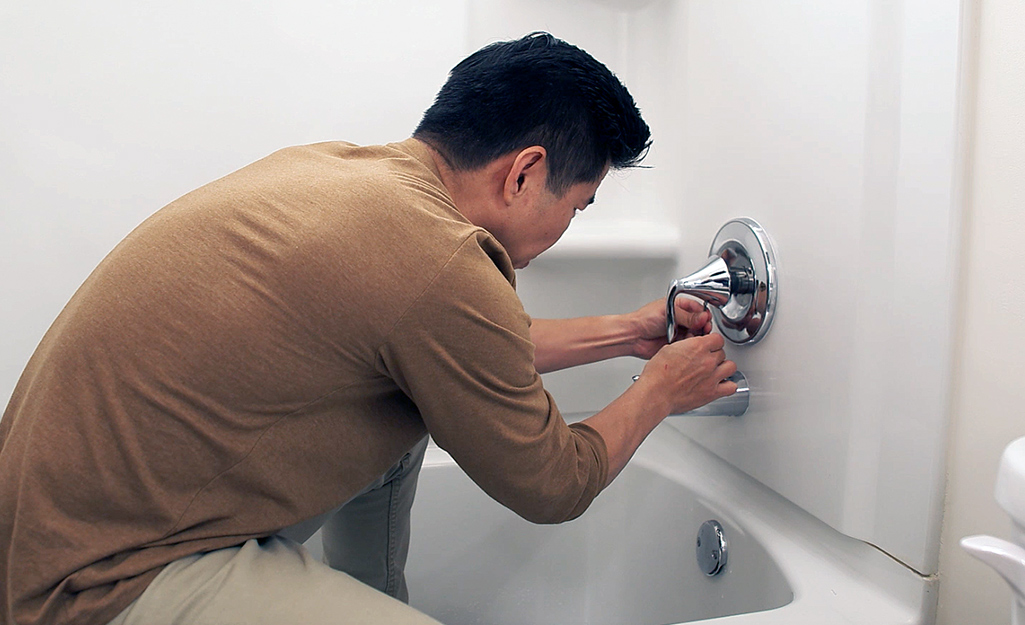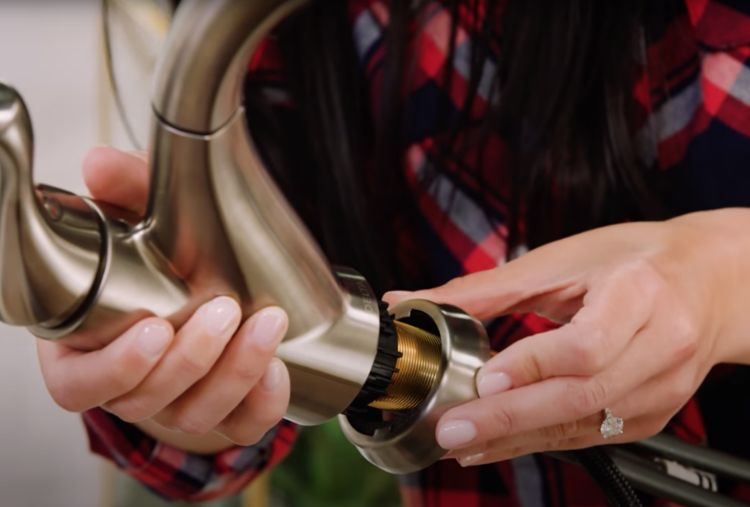What It's Important to Fix a Faulty Faucet
What It's Important to Fix a Faulty Faucet
Blog Article
Were you looking for information and facts concerning What Causes Leaky Faucets & How To Fix Them?

Leaking faucets might look like a minor inconvenience, however their effect exceeds simply the nuisance of the noise. From wasting water to incurring unneeded financial expenses and health and wellness threats, disregarding a leaking tap can bring about various consequences. In this short article, we'll look into why it's essential to address this common home problem immediately and successfully.
Waste of Water
Ecological Effect
Leaking faucets contribute considerably to water waste. According to the Environmental Protection Agency (EPA), a single tap trickling at one drip per second can squander more than 3,000 gallons of water each year. This not just stress water resources yet likewise affects communities and wild animals based on them.
Step-by-Step Overview to Repairing a Dripping Tap
Tools Called for
Before trying to take care of a dripping faucet, collect the required devices, including a flexible wrench, screwdrivers, replacement components (such as washing machines or cartridges), and plumber's tape.
Common Tap Issues and Their Solutions
Recognize the type of tap and the certain concern creating the drip. Usual troubles consist of damaged washing machines, rusty shutoff seats, or damaged O-rings. Describe supplier instructions or online tutorials for step-by-step assistance on repair work.
Financial Costs
Raised Water Costs
Past the environmental effect, dripping faucets can blow up water costs significantly. The built up wastage over time converts right into greater energy expenditures, which could have been avoided with timely repair services.
Possible Building Damage
Additionally, extended trickling can cause damage to fixtures and surfaces surrounding the faucet. Water buildup can cause discoloration, deterioration, and also structural issues if left unattended, resulting in additional repair prices.
Health and wellness Worries
Mold And Mildew and Mildew Growth
The continuous visibility of dampness from a leaking faucet creates an optimal environment for mold and mildew and mildew development. These fungis not only endanger indoor air quality however also posture wellness dangers, specifically for individuals with respiratory system conditions or allergic reactions.
Waterborne Diseases
Stationary water in dripping faucets can end up being a breeding place for bacteria and other virus, increasing the risk of waterborne illness. Impurities such as Legionella microorganisms thrive in stagnant water, potentially causing significant diseases when consumed or breathed in.
Do it yourself vs. Specialist Fixing
Advantages and disadvantages of DIY Repair Work
While some might attempt to fix a trickling faucet themselves, do it yourself repair services come with their very own collection of obstacles. Without appropriate expertise and tools, do it yourself attempts can worsen the concern or result in insufficient repairs, extending the trouble.
Benefits of Employing a Specialist Plumber
Hiring a professional plumber guarantees that the underlying cause of the trickling tap is dealt with successfully. Plumbing professionals possess the competence and tools to detect and repair tap issues successfully, conserving time and minimizing the threat of further damage.
Ecological Duty
Individual Contribution to Conservation
Taking responsibility for repairing leaking faucets lines up with wider efforts toward water preservation and ecological sustainability. Every individual's activities jointly make a significant influence on maintaining valuable resources.
Sustainable Living Practices
By focusing on punctual fixings and embracing water-saving practices, people add to sustainable living techniques that benefit both existing and future generations.
Safety nets
Routine Maintenance Tips
To avoid dripping taps, perform regular maintenance such as cleansing aerators, examining for leaks, and replacing damaged parts immediately. Additionally, think about installing water-saving gadgets or updating to more reliable fixtures.
Value of Prompt Services
Dealing with leaking taps as soon as they're discovered stops more water waste and possible damage, inevitably conserving both water and cash in the long run.
Impact on Property Value
Understanding of Well-Maintained Residential Property
Keeping a residential or commercial property in good condition, including dealing with maintenance issues like dripping faucets, boosts its perceived worth and worth amongst prospective buyers or tenants.
Impact on Resale Value
Residences with well-maintained plumbing fixtures, including taps, command higher resale worths in the realty market. Dealing with trickling faucets can contribute to a favorable perception during residential property evaluations and arrangements.
Final thought
Addressing a leaking tap goes beyond plain benefit; it's an essential step towards conserving water, decreasing economic costs, and protecting wellness and residential or commercial property. Whether via DIY repair work or expert support, acting to fix leaking faucets is a tiny yet impactful method to advertise liable stewardship of sources and contribute to a much healthier, much more lasting future.
How to Fix a Leaky Faucet: Step-by-Step Repair Guide
A leaky faucet may seem like a simple annoyance, but if it's not fixed promptly, that leak could cost hundreds to potentially thousands. From water damage to mold, mildew, and high water bills, even a tiny leak can be catastrophic if left unattended. Damage like this can even affect the overall value of your home, so it's important to take the right approach for leaky faucet repair. You may need the help of a plumber in some cases, but we've got a few tips you can try on how to fix a leaky faucet before calling the pros.
Four Faucet Types
When you're learning how to fix a leaky faucet, the first step is knowing what kind of faucet you're working with! There are four common types.
Cartridge Faucets
Cartridge faucets come in one- or two-handled varieties. In one-handled cartridge faucets, hot and cold water combines in a single cartridge. In the two-handled versions, hot and cold water are controlled separately and mixed in the faucet.
Ball Faucets
Ball faucets have a single lever you push up and down to adjust the pressure and rotate to change the temperature. A slotted metal ball controls the amount of water allowed into the spout.
Compression Washer Faucets
They're the oldest type of faucet, but they're still used in many homes — especially older ones. Compression faucets have two separate handles that, when turned, raise or lower the washer that seals a water valve. This valve stops water from flowing through the faucet when it is turned off.
Disc Faucets
Disc faucets rarely need to be repaired due to their maintenance-free design. The water flow is controlled by two discs — the upper one raises and lowers against a fixed lower disc, creating a watertight seal. If your disc faucet starts leaking, you may need to replace the seals or clean residue buildup from the inlets.
Fixing a Leaky Faucet
Step 1: Turn Off the Water
Whether you're learning how to fix a leaky bathtub faucet or how to fix a leaky kitchen faucet, always turn off the water supply to your working area when you're fixing a leak. The last thing you want is a flood added to your list of things to fix.
Look for the shutoff valves below your sink or around the tub and turn them clockwise to stop the water flow. If your faucet doesn't have shutoff valves, you may need to turn off the water for the whole house. Check to make sure it's off by turning the faucet on. If nothing comes out, you're ready to start the repair.
Step 2: Take Apart the Faucet
How you disassemble your faucet depends on the type of fixture you have. You can use a flathead screwdriver to remove the caps on top of the handle or handles for cartridge and compression faucets. Inside, you should see handle screws. Unscrew these with a screwdriver to remove the handle.
Disc- and ball-style faucets will typically have an inlet screw near the handle, and removing that will reveal the interior of the faucet.
Detach the Valve Stem
For cartridge- and compression-style faucets, you'll see the inner valve stem or cartridge once you remove the faucet handles. If you have a compression faucet, unscrew the brass valve stem. If you have a cartridge faucet, pull out the cartridge. If your cartridge has been in place for a while, it may require some tools or extra force to remove it due to mineral deposits.
Examine and Replace Parts
Once you've removed the parts, check them out to confirm what needs to be replaced. You may see corroded rubber washers, O-rings, stems, or cartridges. On a ball-style faucet, check the seats and springs for damage.
If you need to repair a leaky disc faucet, check the inlet and seals on the lower disc.
Once you determine what parts must be replaced, visit your local hardware store. Bring the damaged parts with you to ensure you can purchase the correct components to replace them.
Clean Valves and Faucet Cavity
If you've removed a stem or cartridge, you may notice mineral buildup in the faucet's threads. Use white vinegar to clean the valve seat by soaking it for a few minutes, then scrub it away with a soft toothbrush and rinse with warm water. You can also clean the interior of the faucet in the same way.
Reassemble the Faucet
Once your faucet is cleaned and the required parts have been replaced, it's time to reassemble it. Put the pieces back together and slowly turn the water supply back on. Doing this slowly is crucial because too much initial water pressure can damage the new hardware you've just installed.
https://homewarranty.firstam.com/blog/how-to-fix-leaky-faucet

Do you enjoy reading up on 4 Common Reasons for a Leaky Faucet? Place feedback directly below. We will be pleased to hear your ideas about this page. Hoping that you come back again soon. Sharing is caring. You won't know, you may be helping someone out. Kudos for being here. Please stop by our blog back soon.
Report this page